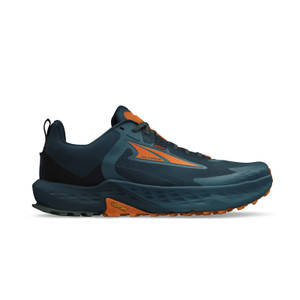
The Best Men's Trail Running Shoes, Road Running Shoes, and Hybrid Running Shoes
Difference Between Men's Trail Running Shoes and Men's Roadrunners
Men's trail running shoes and men's trail hiking shoes are specifically designed for uneven, rugged terrain. Trail running shoes for men provide grip on rugged terrain unlike a road running shoe for men, which is more suitable for a normal road run. Men's trail running shoes and men's trail hiking shoes have a lugged sole which improves traction on uneven terrain to make your movement smooth over rock slabs, gravel, mud, and roots.
Men's trail running shoes and men's trail hiking shoes provide more protection to your feet on rugged terrains. Some of these shoes are very thick and the durable upper material minimizes the risk of tear and injuries.
Men's trail running shoes and men's trail hiking shoes have a very stiff construction to protect them from getting damaged on rocky trails. These are stiffly made to prevent excessive foot rotation on uneven terrains. Your foot might hit a rock or land in a pothole, which could result in an injury. To prevent such mishaps, these shoes are made specifically keeping in view all the factors that go into making a perfect trail running shoe.
How to choose the best men's trail running shoes?
Shoe Type
Your shoe type depends a lot on the type of trail you prefer to run on. In Men's trail running shoes and men's trail hiking shoes, there are basically three broad categories of shoes. Light trail shoe, rugged trail shoe, and off-trail shoe. Light trail shoes are made for relatively uniform surfaces. They protect your feet from gravel paths, fire roads, and rolling hills.
You can use rugged trail shoes in a variety of terrains. These shoes have toe guards at the front and hidden plates to protect your feet from rocks and roots. These shoes are used as men's trail hiking shoes. They also have soft grippy rubber to prevent footfall. Off-trail shoes have basically all the characteristics of rugged trail shoes but with additional upgrades. Off-trail shoes are made up of more resilient materials like polyurethane foam midsoles. These shoes are more
Cushioning Level of the Shoe
A few years ago, a new trend of high cushion midsole in shoes hit the market. Today there are a lot of options among high midsoles and low midsoles men's trail running shoes. You can choose from different midsoles cushioning levels like barefoot, minimal, moderate, and maximum.
Barefoot cushion-level shoes have no padding. The appeal is that they let you develop an enhanced feel for the trail and your own biomechanics. Minimal cushion level shoes are for those runners who prefer a little padding but are also comfortable with less padding. Moderate cushion-level shoes are the normal midsole running shoes to protect your feet from rocks and roots. Maximum cushion levels are usually used as men's trail running shoes and men's trail hiking shoes.
Trail Shoe Fit
Fit is one of the most important factors when it comes to men's trail running shoes and men's trail hiking shoes. A shoe's arch shape, arch length, and foot volume are the factors taken into consideration when choosing the best fit for your feet. Look for a last, around which a shoe is made. It will help you a lot while buying shoes online.
Always take the proper measurements of your feet before buying shoes because the shape of the feet keeps changing. While you run the feet become sore and for that reason, your shoe must have a proper gap to adjust according to your feet while you run.
Heel-to-Toe Drop
Another important factor that you should keep in mind while choosing your men's trail running shoes and men's trail hiking shoes is the heel-to-toe drop. The heel-to-toe drop is basically the difference between the height at the heel and the height at the forefoot. Barefoot cushion level shoes have 0 mm heel-to-toe drop while minimal cushion shoes have 0 to 4 mm drop. The moderate and maximum level of cushion shoes offers a wide range of heel-to-toe drops.
Double-check the heel drop when buying men's trail running shoes or men's trail hiking shoes, because the shoe company often keeps changing the heel drop. If you are about to make a transition to barefoot or minimalistic shoes, take about 6 months of time. That will allow making a smooth transition without any difficulty.




